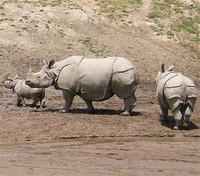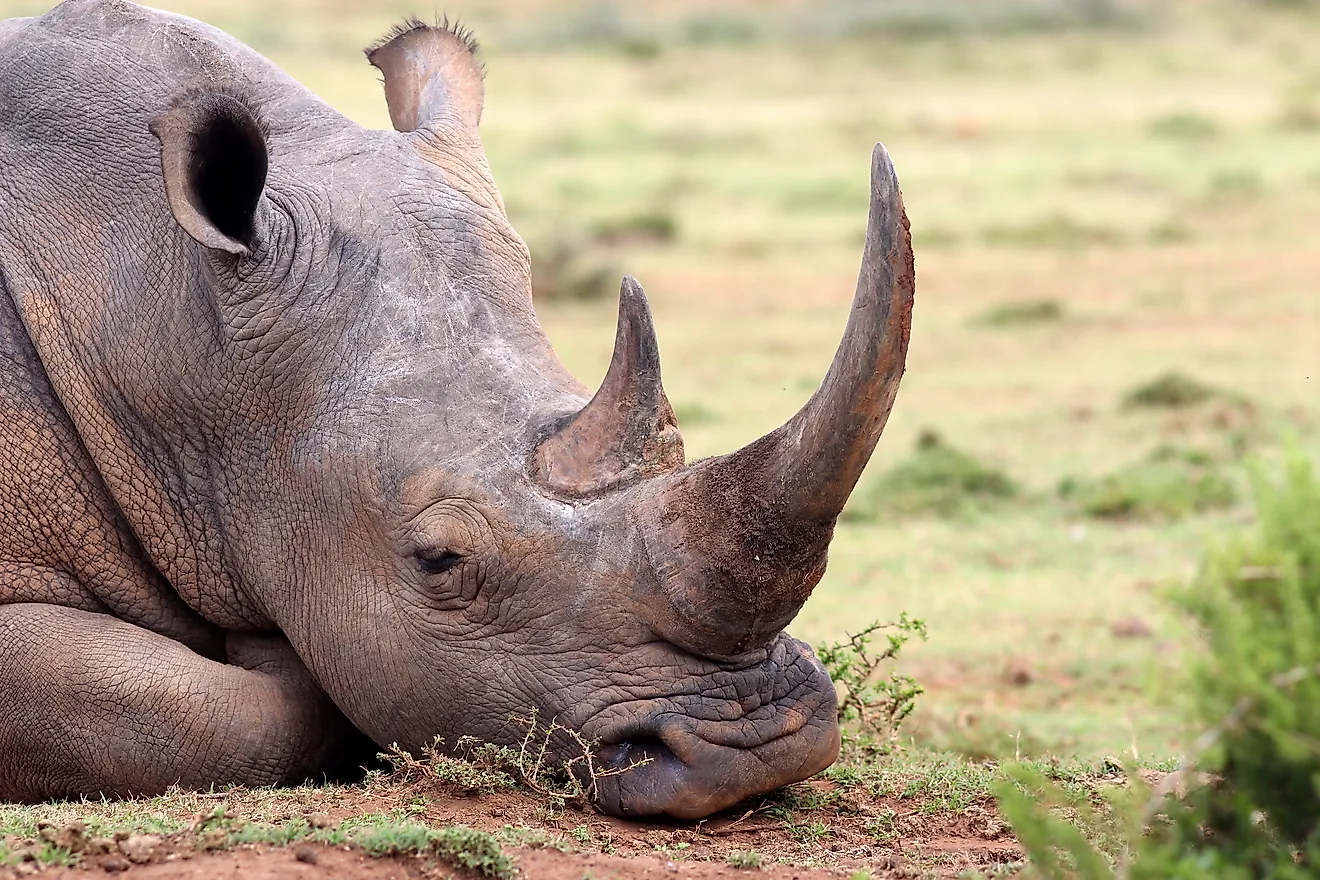


The Javan rhino is also known as the lesser one-horned rhinoceros (in contrast with the greater one-horned rhinoceros, another name for the Indian rhino). sondaicus is derived from sunda, the biogeographical region that comprises the islands of Sumatra, Java, Borneo, and surrounding smaller islands. The genus name Rhinoceros is a combination of the ancient Greek words ῥίς (ris) meaning 'nose' and κέρας (keras) meaning 'horn of an animal'. In April 2012, the National Parks Authority released video showing 35 individuals, including mother and offspring pairs and courting adults. Two adult Javan rhinoceroses with their calves were filmed in a motion-triggered video released on 28 February 2011 by WWF and Indonesia's National Park Authority, which proved it is still breeding in the wild.

Consequently, Javan rhinos are the least studied of all rhinoceros species. Researchers rely on camera traps and fecal samples to gauge health and behavior. Scientists and conservationists rarely study the animals directly due to their extreme rarity and the danger of interfering with such an endangered species. Aside from humans, adults have no predators in their range. It is mostly solitary, except for courtship and rearing offspring, though groups may occasionally congregate near wallows and salt licks. It historically inhabited lowland rainforest, wet grasslands, and large floodplains. The Javan rhinoceros can live around 30–45 years in the wild. The remaining range is within one nationally protected area, but it is still at risk from poachers, disease, and loss of genetic diversity leading to inbreeding depression. Loss of habitat, especially as the result of wars, such as the Vietnam War, has also contributed to its decline and hindered recovery. : 31 As European presence in its range increased, trophy hunting also became a serious threat. The decline of Javan rhinoceros is attributed to poaching, primarily for its horns, which are highly valued in traditional Chinese medicine, fetching as much as US$30,000 per kg on the black market. The Javan rhinoceros population in Vietnam's Cat Tien National Park was declared to be locally extinct in 2011. It is one of the rarest large mammals on Earth, : 21 with a population of approximately 74 in Ujung Kulon National Park at the western tip of Java in Indonesia. Today, it is critically endangered, with only one known population in the wild, and no individuals in captivity. The Javan rhinoceros ranged from the islands of Java and Sumatra throughout Southeast Asia and into India and China. Its horn is usually shorter than 25 cm (9.8 in). It belongs to the Rhinoceros genus and has a mosaic, armour-like skin, is 3.1–3.2 m (10–10 ft) long and 1.4–1.7 m (4.6–5.6 ft) high. The Javan rhinoceros ( Rhinoceros sondaicus), also known as the Javan rhino, Sunda rhinoceros or lesser one-horned rhinoceros, is a very rare member of the family Rhinocerotidae and one of five extant rhinoceroses.


 0 kommentar(er)
0 kommentar(er)
